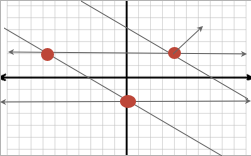Although portfolios are sometimes used for standardized testing and
placement or exit exams, I focus particularly on portfolio assessment
in collegiate writing classrooms. In many of these classrooms,
assessment—and grading—is determined according to a portfolio system.
Students write all semester long; they write narrative, informative,
argumentative, creative, and even poetic nonfiction texts. Students
write for different audiences—professors, peers, web users,
administrators, future employers—and in different mediums—hardcopy
paper, memo, PowerPoint presentation, website, resume, and movie.
In order to assess this multitude of text or document production, more
than mere assignment grades are needed. Scaffolding and growth must be
taken into account. The learning rather than a single particular end
product becomes the primary focus of the course. Evaluating
contextualized writing processes and products solves instructors’
problems of attempting to include participation, learning, growth,
revision, and end products into final, point- or letter-system grades
(Yancey, 1992; Blair & Takayoshi, 1997).
By focusing on various steps associated with writing processes
(prewriting, drafting, peer review, one-on-one conferencing, writing
center conferences, more drafting, editing, proofreading), not only
products, portfolio assessment focuses on students’ trajectory over the
duration of the course, their points of departure from given formulas
and archaic expectations.
|
Not only are portfolios useful products for instructors, but portfolios
also have the potential to be useful and meaningful to the students who
compile them. According to Hawisher and Selfe (1997), portfolios
“encourage students to reflect on their learning, thereby giving them
an opportunity to enhance their performance through evaluative feedback
and review” (p. 320). Portfolios, then, become an opportunity for
growth.
Portfolios typically emphasize what students learned throughout the
course. What happened to their writing over the past 15 weeks? Were
they able to transfer strategies from one project to the next? Do
students’ portfolios demonstrate that course objectives were met?
Students and instructors both benefit from asking these and similar
questions. As Larson (1996) points out, answering these questions is an
important move—portfolios, in effect, are “the written displays of the
student’s learning process and of the teacher’s teaching process” (p.
272).
Instructors highlight for themselves and their students the recursive
nature of the writing process as they continuously strive to answer
these questions (Gold, 1992). For writing assessment to be
meaningful, assessment practices must be valid; there must be a
well-constructed argument for the use of the assessment in a particular
context for a particular purpose (Cronbach, 1988, Messick, 1989).
Portfolios allow assessors to look within the particular context of the
classroom and into the particular coursework of one student within that
setting By answering the above questions, instructors have the
opportunity to be reflexive practitioners with valid arguments.
If aligned with the objectives, goals, and outcomes of the course,
portfolios as an assessment practice can be effectively argued. The
particular validity argument for use of a portfolio, though, cannot be
made in this webtext. This text is not fitted to a particular context
in which portfolios might be utilized; rather, it seeks to determine
why portfolios and multimodal composition can be used in conjunction as
learning devices and techniques for collegiate composition classrooms.
|
